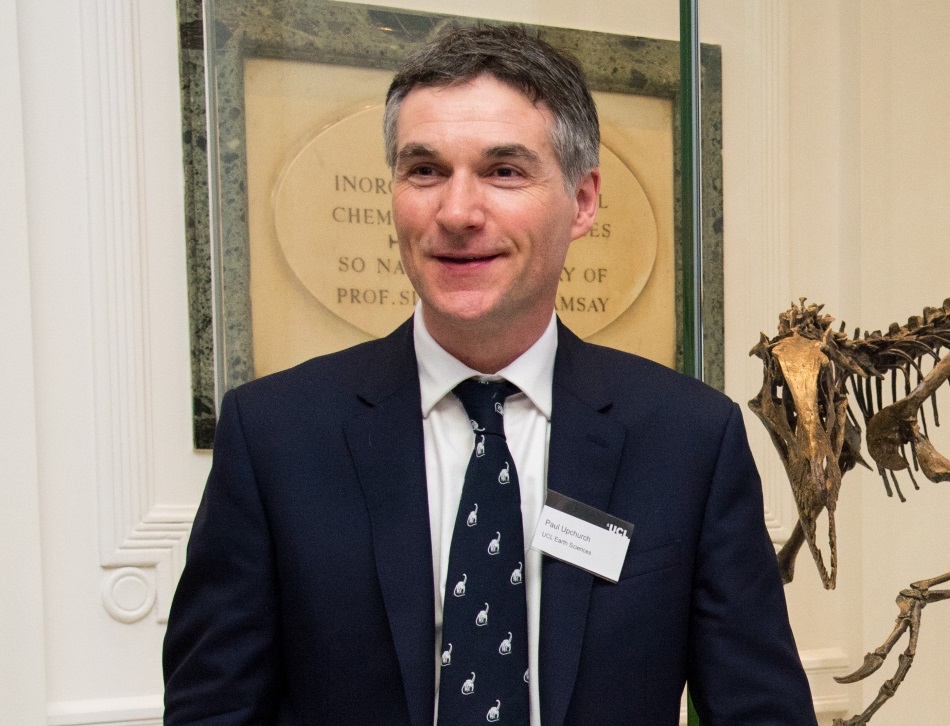Professors Paul Upchurch and Seralynne Vann share their personal experiences and perspectives on new research, commissioned by the Royal Society, on trends relating to students and academic staff with disabilities in STEM.

Our personal experiences of academic careers in STEM suggest that there are considerable barriers for people with disabilities. In our home universities and research institutes, or while attending conferences or on research trips, it is very rare for us to meet other colleagues with disabilities. This apparent lack of representation and diversity reflects a reluctance to disclose disabilities where perceived stigmas persist (such as mental health issues), combined with barriers that tend to exclude disabled people, including assumptions by prospective employers and colleagues that people with disabilities will be less competent researchers.
However, as scientists, we are also uneasy about basing conclusions on the small amount of subjective data that comes from our own personal career trajectories. A characterisation of disability in STEM should be based on more rigorous and statistically valid approaches. Thus, the Royal Society commissioned research to increase understanding of the barriers for disabled students and staff in academia, and identify areas where we can work to increase the presence of, and support for disabled individuals in STEM.
Differential declaration rates
As an important first step, the Royal Society commissioned Jisc to look at the numbers of students and staff with a range of disabilities represented across STEM subjects in academia over the last decade. The report found that the numbers of students with learning, social, and mental health disabilities all increased over this period. By contrast, representation of students with physical disabilities has remained virtually unchanged through time, and absolute numbers are typically very low. One factor that may underpin this increase is improved university support for students with disabilities over the past two decades. The availability of practical support, such as the Disabled Student Allowance and clear procedures for established reasonable adjustments, provide greater incentives for students to receive formal diagnoses and declare disabilities as there is clear practical support available. However, students with physical disabilities have always had less choice with regard to declaration: being a wheelchair user makes a disability obvious in ways that having a mental health issue may not. Thus, while students with physical disabilities have also benefited from the improved support provided by universities, this has not resulted in increased representation because there is little scope for increased declaration among this group.
A leaky pipeline
The situation is very different when looking at staff, with a much smaller percentage of disabled staff compared to students. We wanted to get a better idea of the reasons for this. Are staff less likely to disclose their disability than students, or is there a ‘leaky pipeline’ whereby disabled individuals are leaving STEM careers because of barriers in academia? The Society therefore commissioned a report from the Careers Research and Advisory Centre (CRAC) based on an extensive review of the literature, the HESA data for staff, and interviews with disabled staff in STEM.
Overall, the situation appears bleak, with relatively low numbers of staff with disabilities, and a series of step-like drops in representation at each major career transition stage. STEM academia is a demanding environment, with high competition, long working hours, and the need to constantly perform at one’s best. Being successful in STEM is not just about carrying out good research anymore. It is heavily influenced by metrics, getting in the ‘right’ journal and being well-cited and the ability to self-promote, through being in the right circles and getting your name known by giving talks and conferences. There is a growing expectation that publishing a paper is not enough - it also needs to be highly promoted (for example, publishing a thread on Twitter describing your paper in a captivating and humorous way).
This environment is difficult for all, let alone scientists with disabilities. Disabilities can make attendance at conferences and travelling particularly difficult. The increase in online outlets has not levelled the playing field. The demands of online and physical self-promotion can prove difficult for those with social disabilities.
While different disabilities will come with specific difficulties, what is common across all is that things typically take longer and require more effort than for non-disabled colleagues. Moreover, many staff do not understand the processes of disclosing their disability to their employer; is it a data collection exercise or does it enable access to additional support? How will the data be used and who will have access to such personal data? Even if disabilities are disclosed, there is often a lack of awareness regarding the type of support that can be accessed and what reasonable adjustments can be made. While for individuals with physical disabilities there is often no choice but to disclose given the obvious nature of impairments, for less visible disabilities (learning, social, mental health) there is much more of a trade-off between the benefits of additional support versus the possible perceived stigma associated with making these disabilities known. The interviews in the CRAC report make it clear that disabled staff continue to experience the effects of conscious and unconscious biases. This is often subtle and can range from a simple lack of awareness of disability-related issues through to assumptions that those with disabilities are less deserving of employment or promotion.
Breaking down barriers
So, what can be done? Looking at the data can tell us something. Students with physical disabilities appear to be supported once they get to university, with fewer dropping out relative to students with Autism Spectrum Disorder (‘ASD’) or mental health conditions, but we need to increase their access to STEM subjects and provide greater support at transitions, such as going from undergraduate to employment.
Reducing stigma is a key factor in increasing staff disclosure rates. The higher representation of people with disabilities coming into the system at undergraduate stage will hopefully have a trickle-down effect through the staff levels, with greater numbers of staff being represented and feeling more comfortable with disclosure . Universities and employers must clearly signpost the support and reasonable adjustments that are available. However, many of the barriers are due to the inherent nature and current culture of academia, such as access to funding and the Research Excellence Framework, and it is hard to see how these can easily be changed. Promoting team and collaborative science would clearly be beneficial – getting away from the perception of there being a ‘pinnacle scientist’ who is singularly responsible for scientific advances. Training for line managers, recruitment committees and others should dispel some stereotypes of disability. And the onus is not just on universities and research institutes. The CRAC report also notes several ways in which grant awarding bodies can create a more level playing field. These include more flexibility regarding grant submission procedures, such as allowing researchers with visual impairments to use the fonts that suit them best, and providing additional funding that allows people with disabilities to tailor conference travel and attendance in ways that better suit their needs.
We still have a great deal to learn about the factors that affect the representation and career trajectories of people with disabilities in STEM. We have even more work to do in terms of removing barriers and creating a level playing field. However, the two recent reports commissioned by the Royal Society yield some important insights and provide a foundation for tackling these complex and difficult issues. Not only do the two reports provide recommendations of practical steps that can be implemented immediately, they also outline a number of areas for future research. While the scale of the task is daunting, as senior academics with disabilities, we are optimistic for the future.







